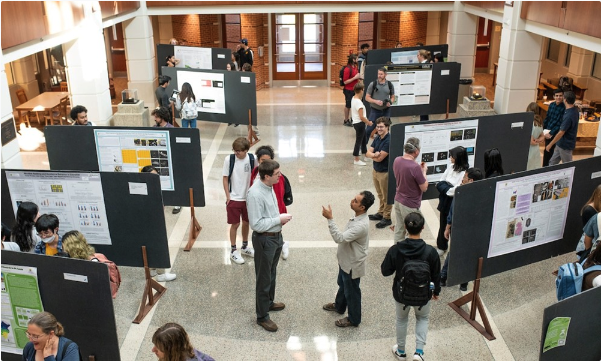Conodonts in the Nature Park: Exploring Our History
Document Type
Poster
Publication Date
Fall 2021
Abstract
Are conodonts present in the Nature Park? Can we identify them and use them to determine the age of the rocks in the Nature Park? Do the specimens we find in the Nature Park match the species found in previous studies of the Ste. Genevieve Limestone? To answer these questions, we processed limestone samples by manually extracting them and crushing those samples. We then dry sieved samples using 18-20 micron pans, and then combined sorted grains with 10% acetic acid. Those contents were wet sieved with 60 and 120 microns pans. This method allowed us to extract approximately 30 specimens to be examined under a scope for the identification process. Using the multi element approach, we were able to identify P, S, and M series elements. Ozarkodina, Spathognathodus, and Neoprioniodus were most commonly identified and found in both the upper and lower layers of the quarry wall. Some specimens that were only expected to be found in St. Louis Limestone were found in our outcrop, which we initially hypothesized to be the Ste. Genevieve Limestone. Explanations for these results could be that the quarry falls partially in the Ste. Genevieve and the St. Louis Limestone or there were potential errors made in the identification process, resulting in incorrect placement of the boundary. Our data was inconclusive and would require further research to bring more conclusive results.
Recommended Citation
Kaiser, Emily G.; Allen, Lannea; and Cope, T. PhD, "Conodonts in the Nature Park: Exploring Our History" (2021). Annual Student Research Poster Session. 65, Scholarly and Creative Work from DePauw University.
https://scholarship.depauw.edu/srfposters/65
Poster



Comments
Thanks to the Asher and Norton Endowed Fund in the Sciences, that allowed us to have the resources to do our research; Tim Cope, for guidance and stratigraphic knowledge throughout research; Caroline Gibson, the librarian who helped us find sources, as well as helping us navigate through different databases; Ken Brown and Wendy Williams, for instructing us through use of the SEM, as well as allowing us access to the SEM; Jim Brack, for allowing us onto his property to see a potential outcrop of the Ste. Genevieve for further sampling; Alyssa Bancroft, the conodont expert who helped us understand what conodonts are, how to identify them, and provided us with excellent sources of information.